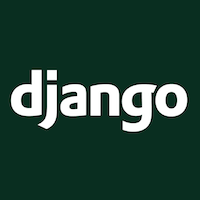Django Tutorial

Django Tutorial provides basic and advanced concepts of Django. Our Django Tutorial is designed for beginners and professionals both.
Django is a Web Application Framework which is used to develop web applications.
Our Django Tutorial includes all topics of Django such as introduction, features, installation, environment setup, admin interface, cookie, form validation, Model, Template Engine, Migration, MVT etc. All the topics are explained in detail so that reader can get enought knowledge of Django.
Introduction
Django is a web application framework written in Python programming language. It is based on MVT (Model View Template) design pattern. The Django is very demanding due to its rapid development feature. It takes less time to build application after collecting client requirement.
This framework uses a famous tag line:The web framework for perfectionists with deadlines.
By using Django, we can build web applications in very less time. Django is designed in such a manner that it handles much of configure things automatically, so we can focus on application development only.
History
Django was design and developed by Lawrence journal world in 2003 and publicly released under BSD license in July 2005. Currently, DSF (Django Software Foundation) maintains its development and release cycle.
Django was released on 21, July 2005. Its current stable version is 2.0.3 which was released on 6 March, 2018.
Django Version History
| Version | Date | Description |
|---|---|---|
| 0.90 | 16 Nov 2005 | |
| 0.91 | 11 Jan 2006 | magic removal |
| 0.96 | 23 Mar 2007 | newforms, testing tools |
| 1.0 | 3 Sep 2008 | API stability, decoupled admin, unicode |
| 1.1 | 29 Jul 2009 | Aggregates, transaction based tests |
| 1.2 | 17 May 2010 | Multiple db connections, CSRF, model validation |
| 1.3 | 23 Mar 2011 | Timezones, in browser testing, app templates. |
| 1.5 | 26 Feb 2013 | Python 3 Support, configurable user model |
| 1.6 | 6 Nov 2013 | Dedicated to Malcolm Tredinnick, db transaction management, connection pooling. |
| 1.7 | 2 Sep 2014 | Migrations, application loading and configuration. |
| 1.8 LTS | 2 Sep 2014 | Migrations, application loading and configuration. |
| 1.8 LTS | 1 Apr 2015 | Native support for multiple template engines.Supported until at least April 2018 |
| 1.9 | 1 Dec 2015 | Automatic password validation. New styling for admin interface. |
| 1.10 | 1 Aug 2016 | Full text search for PostgreSQL. New-style middleware. |
| 1.11 LTS | 1.11 LTS | Last version to support Python 2.7.Supported until at least April 2020 |
| 2.0 | Dec 2017 | First Python 3-only release, Simplified URL routing syntax, Mobile friendly admin. |
Popularity
Django is widely accepted and used by various well-known sites such as:
- Mozilla
- Disqus
- Bitbucket
- The Washington Times
Features of Django
- Rapid Development
- Secure
- Scalable
- Fully loaded
- Versatile
- Open Source
- Vast and Supported Community
Rapid Development
Django was designed with the intention to make a framework which takes less time to build web application. The project implementation phase is a very time taken but Django creates it rapidly.
Secure
Django takes security seriously and helps developers to avoid many common security mistakes, such as SQL injection, cross-site scripting, cross-site request forgery etc. Its user authentication system provides a secure way to manage user accounts and passwords.
Scalable
Django is scalable in nature and has ability to quickly and flexibly switch from small to large scale application project.
Fully loaded
Django includes various helping task modules and libraries which can be used to handle common Web development tasks. Django takes care of user authentication, content administration, site maps, RSS feeds etc.
Versatile
Django is versatile in nature which allows it to build applications for different-different domains. Now a days, Companies are using Django to build various types of applications like: content management systems, social networks sites or scientific computing platforms etc.
Open Source
Django is an open source web application framework. It is publicly available without cost. It can be downloaded with source code from the public repository. Open source reduces the total cost of the application development.
Vast and Supported Community
Django is an one of the most popular web framework. It has widely supportive community and channels to share and connect.
Django Index
Django Tutorial
Prerequisites
Before learning Django Tutorial, you must have knowledge of OOPs and Python Programming language.
Audience
Our Django Tutorial is designed to help beginners and professionals.
Problem
We assure that you will not find any problem in this Django Tutorial. But if there is any mistake, please post the problem in contact form.
